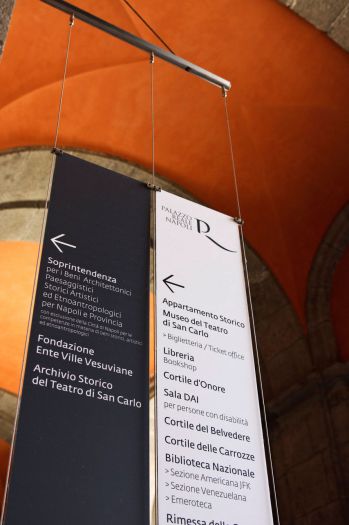 Wayfinding is an extremely important component of architectural design. Aisle markers, campus signs, terminal indicators and medical wing directions all provide a service in saving time but also create a “system” that is not only signage, but aids in the development of a brand by combining marketing, identity and design.
Wayfinding is an extremely important component of architectural design. Aisle markers, campus signs, terminal indicators and medical wing directions all provide a service in saving time but also create a “system” that is not only signage, but aids in the development of a brand by combining marketing, identity and design.
Price without affecting quality is very important in these jobs, whether the job is healthcare, hospitality, transportation, education, etc. the fabricators are always trying to cut costs to meet very stringent customer budgets, while still delivering top quality innovative and memorable designs that drive their client’s experience.
Sign materials have been value-engineered for lower-cost while maintaining similar or improved performance. This occurs through new product testing, by constantly changing product design allowing sign manufacturers to create “sign system designs” which can then be re-used in multiple projects.
Customization is always requested from specifiers, and this drives the next new sign systems designs by the sign fabricators. Having a selection of sign systems at various price levels allows the sign fabricators to save otherwise costly custom re-designs per each project.
Creating balance between functionality and aesthetics is something that designers find very important when determining materials to consider for use in their wayfinding systems. The key to success is being able to stay consistent and true to the brand’s identity while creating a functional system. The right choice of materials/substrates can aid in this challenge. The biggest benefit of many of these substrates is their versatility. Whether it’s aluminum composite materials (Dibond®), foamed PVC (Sintra®), or high-performance foam boards (Gatorfoam®), their versatility opens the door for the designer to consider a broad range of looks and finishes.
According to fabricators at InteriorTech Sign Co., a main component of their Tague Lumber interior signage project was consistency within the Lumber brand. With existing Tague Lumber store locations, InteriorTech was asked to match the signage as closely as possible. They state that the particular Gatorfoam® and Sintra® PVC boards were chosen for their light weight, ease of routing and low cost.
Featured Project: Tague Lumber
Location: Kennet Square, PA
Designer: Ira Steingold
Fabricator: InteriorTech Sign Co.
3A Composites Graphic Display USA Material: Sintra® and Gatorfoam®
Featured Project: Royal Palace of Naples
Location: Naples Italy
Design Firm: zelig
Creative Director: Alessandro Cocchia
Graphic Design Junior: Giovanni Verde
Photography: Vito Della Speranza
3A Composites Graphic Display USA Material: Dibond®

